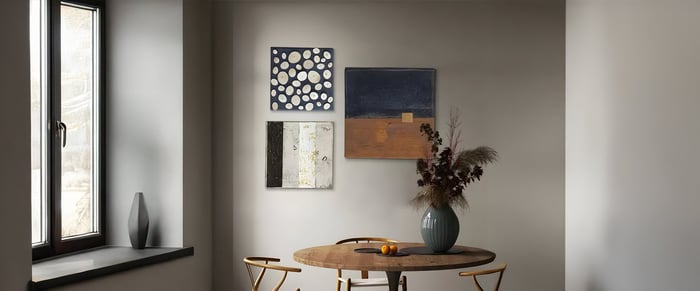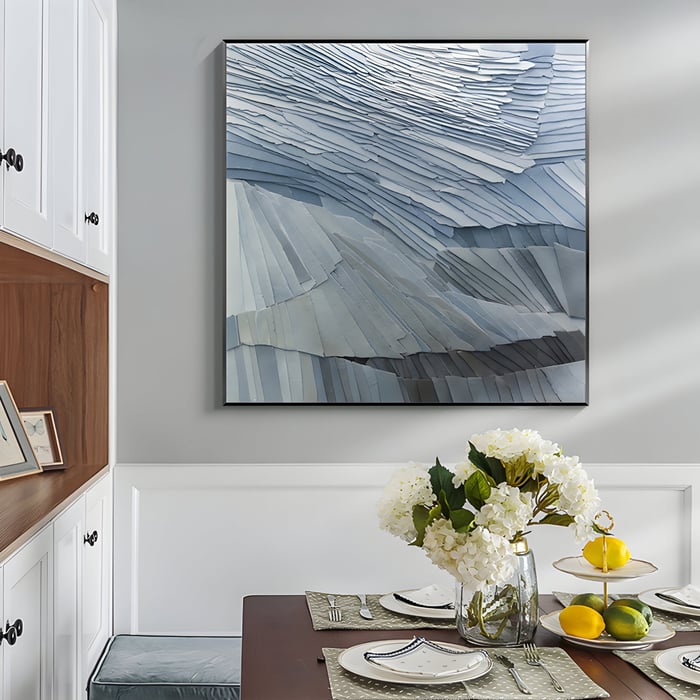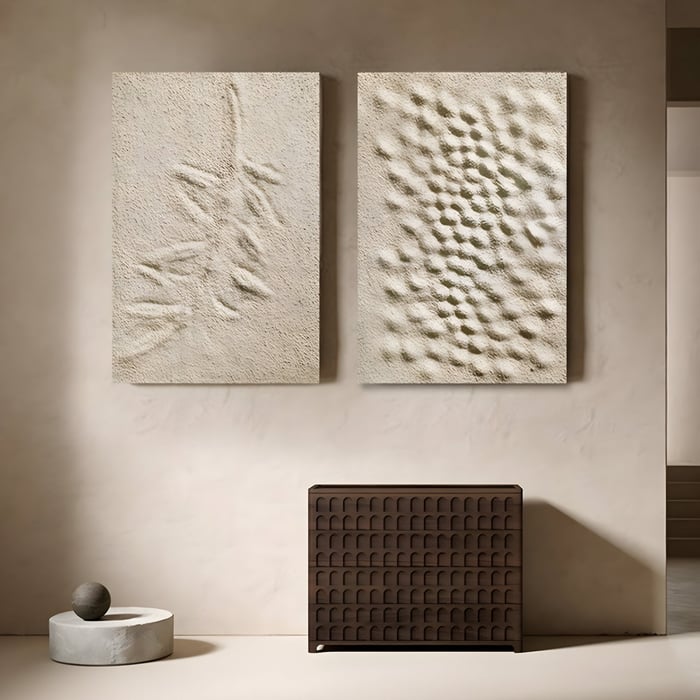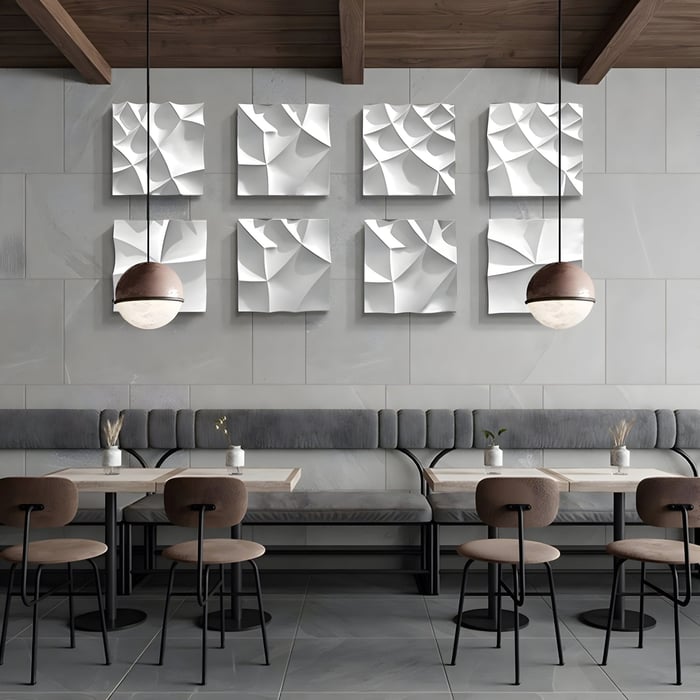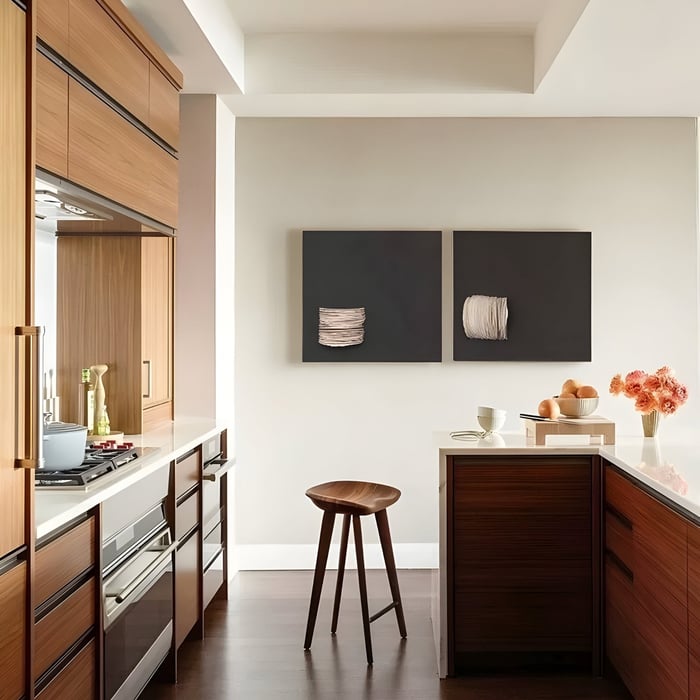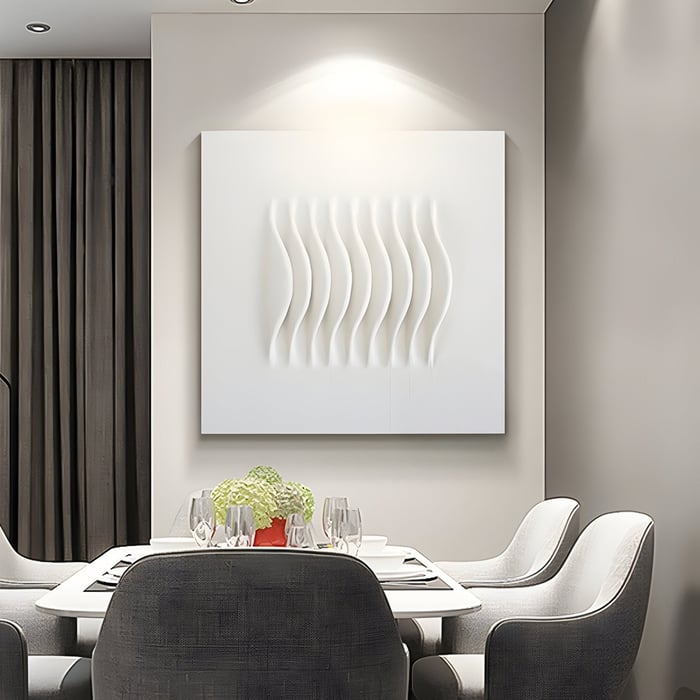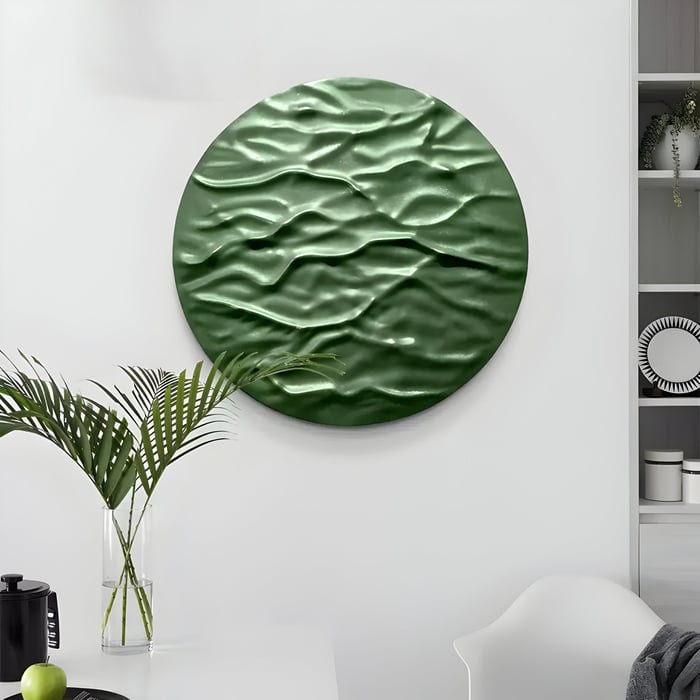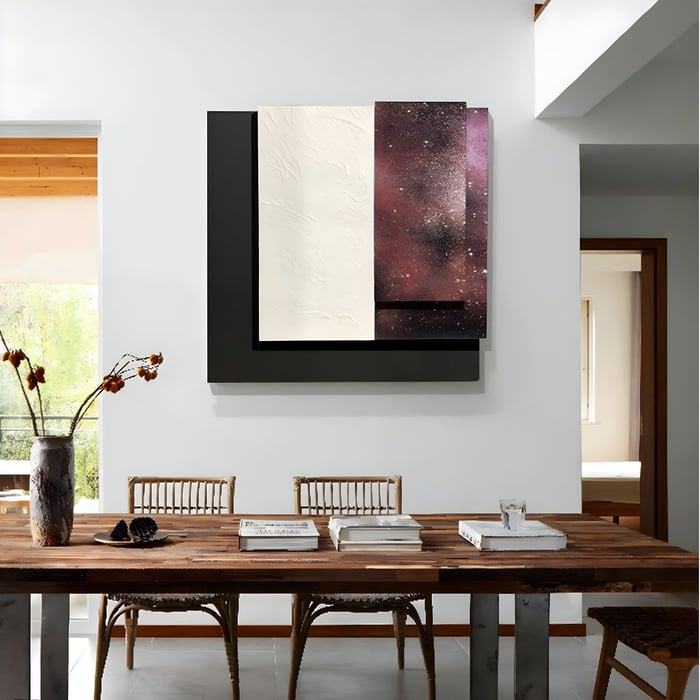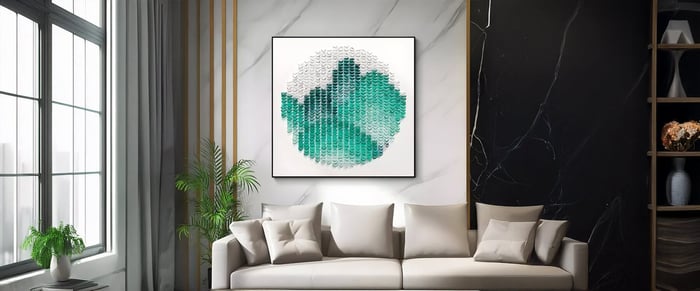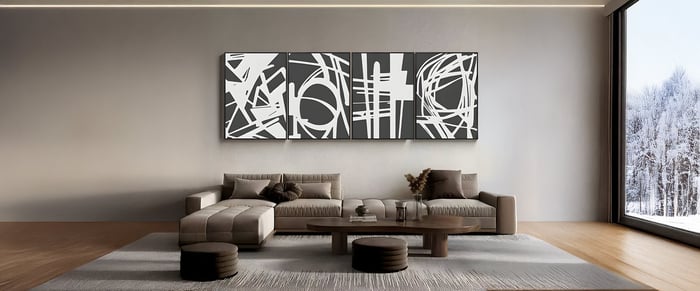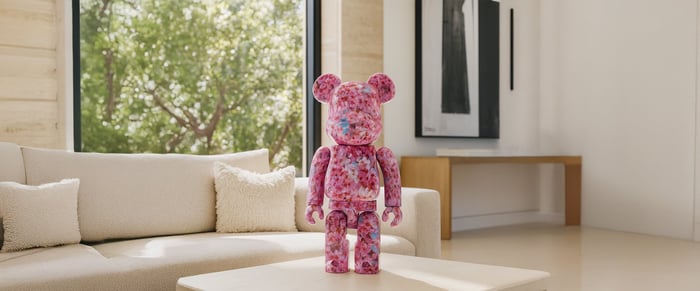Table of Contents
- Introduction - Why Wabi Sabi Art Makes Dining Rooms Better
- What Defines Wabi Sabi Wall Art? Key Features
- Sizing & Composition Tips: Choosing Paintings for Different Dining Room Types
- Styling Wabi Sabi Paintings to Spark Conversation
- Lighting & Placement: Letting Wabi Sabi Paintings Shine
- Care & Maintenance: Keeping Wabi Sabi Art Alive & Comfortable
- Examples: Dining Rooms with Wabi Sabi Wall Paintings That Spark Conversations
- Conclusion - Creating Dining Spaces Full of Warmth & Conversation with Wabi Sabi
- FAQs
Introduction - Why Wabi Sabi Art Makes Dining Rooms Better
The dining room is more than a place to eat; it’s where conversations flow, memories form, and atmosphere matters. From the furniture to the lighting, every detail sets the tone, and wall art plays a central role in shaping that mood. Wabi Sabi art, rooted in the Japanese philosophy of imperfection and impermanence, is a natural fit for dining rooms. With earthy textures, muted palettes, and organic irregularities, these paintings evoke calm and authenticity while sparking meaningful conversation.
In this guide, we’ll explore what defines Wabi Sabi paintings, how to size and style them for different dining room layouts, and how to pair them with lighting, furniture, and décor for maximum effect.
What Defines Wabi Sabi Wall Art? Key Features
At its core, Wabi Sabi is a way of seeing beauty in imperfection, transience, and authenticity. It rejects the idea of flawless surfaces in favour of raw textures, natural marks, and understated elegance.
Aesthetic hallmarks include:
Earthy tones and muted colours - browns, greys, creams, soft greens, and subtle blues that echo natural landscapes.
Textural depth - cracked plaster, layered clay, coarse linen, or mixed media to create tactile intrigue.
Organic or abstract forms - irregular shapes and flowing compositions instead of rigid patterns.
Simple composition - space is left to breathe, with emphasis on balance rather than clutter.
Materials often include natural pigments, plaster or clay on canvas, raw linen, and sometimes wood or stone incorporated as part of the artwork. A rustic wall painting in this style often feels closer to an artefact than a polished piece, making it timeless and conversation-worthy.
Sizing & Composition Tips: Choosing Paintings for Different Dining Room Types
The right size and shape of Wabi Sabi painting depends largely on your dining room layout.
Small & Intimate Dining Spaces
Opt for modestly sized works or vertical canvas art paintings with lots of negative space.
Imperfect wall paintings with light textures prevent the room from feeling cramped.
Avoid heavy frames; instead, choose unfinished wood or no frame at all.
Wide & Long Dining Rooms
Horizontal compositions, triptychs, or a series of smaller muted colour paintings work best.
Position art in alignment with the table’s length to create visual balance.
A bold piece of wabi-sabi abstract art can anchor one end of the room for focus.
Open-Plan or Shared Spaces
Select pieces that echo existing textures, such as organic art canvases that mirror the grain of your dining table.
Keep colour harmony with surrounding spaces, earth tone wall art works well for continuity.
In open layouts, larger works often feel more natural than small scattered ones.
Colour & Contrast
Muted palettes dominate, but subtle accents can bring warmth, think a touch of ochre, rust, or soft teal. Texture outweighs colour when it comes to impact, so a rough mixed media painting often speaks louder than a bright tone.
Statements vs. Subtle Backgrounds
A dining room art piece doesn’t always need to dominate. Sometimes the best choice is a soft, rustic wall painting that gently enriches the background while letting people, food, and conversation take centre stage.
Styling Wabi Sabi Paintings to Spark Conversation
How you style Wabi Sabi paintings is as important as the pieces themselves.
Pair with natural materials: Dining tables in raw wood or stone, linen table runners, and rough ceramic tableware echo the organic textures of the artwork.
Play with grouping: One central imperfect wall painting can be supported by smaller earth tone wall art pieces or Japanese aesthetic wall art hangings with similar hues.
Leave breathing space: Cluttered arrangements dilute the impact. Allow textured pieces to stand alone, framed by wall space.
Echo imperfection in décor: Reinforce the theme with imperfect ceramics, weathered accessories, or simple dried branches in vases. These subtle echoes connect wall and table in harmony.
Wabi Sabi art naturally encourages slower dining and deeper connection. Its quiet presence sparks conversation without overwhelming the senses.
Lighting & Placement: Letting Wabi Sabi Paintings Shine
The beauty of Wabi Sabi art lies in texture, which lighting can either enhance or flatten.
Soft, diffused light works best - avoid harsh overhead glare. Wall sconces, pendant lamps, or candlelight bring out natural shadows.
Position at eye level - align the centre of the painting with diners’ sightlines when seated.
Enhance with backdrops - textured plaster, neutral paints, or exposed brick emphasise the raw beauty of organic art pieces.
Consider proportion - above a sideboard or buffet, place the artwork so its midpoint is proportionally balanced. Too high and it feels disconnected, too low and it crowds furniture.
Thoughtful lighting and placement can transform muted colour paintings into centrepieces that evolve with the shifting glow of day and night.
Care & Maintenance: Keeping Wabi Sabi Art Alive & Comfortable
Caring for Wabi Sabi art is less about keeping it pristine and more about preserving its natural character.
Cleaning: Use a soft brush or dry cloth to remove dust. Avoid water or chemicals, especially on raw textures and mixed media.
Sunlight: Keep away from strong, direct light to protect natural pigments from fading.
Humidity: Avoid damp areas; textured wall paintings can absorb moisture and risk mould.
Ageing gracefully: Some wear is expected and even welcomed, it’s part of Wabi Sabi’s charm. The key is to prevent damage that undermines the work, not the marks that add history.
Framing/backing: Opt for unfinished frames or no frames at all, but ensure backings protect against moisture transfer from walls.
Handled with care, Wabi Sabi paintings develop character while retaining their integrity.
Examples: Dining Rooms with Wabi Sabi Wall Paintings That Spark Conversations
Visualising examples makes it easier to see how Wabi Sabi works in practice.
Earthy Abstract Above a Wooden Table
A muted brown and cream abstract texture painting hung above a reclaimed oak table creates cohesion. The organic rough edges spark conversations about nature and craft.Triptych of Neutral Panels in a Long Dining Room
Three linen-based Wabi Sabi paintings placed along a wide dining room wall mirror the length of the dining table. Subtle earth tones tie the room together, while varied textures stop monotony.Mixed Media in Open-Plan Dining
A large rustic wall painting combining plaster and natural pigments sits against a neutral plaster wall in an open-plan dining-living space. The painting complements concrete floors and linen seating, tying modern industrial with Japanese aesthetic wall art traditions.
These examples show that whether small or expansive, every dining room benefits from imperfect wall paintings that encourage dialogue and atmosphere.
Conclusion - Creating Dining Spaces Full of Warmth & Conversation with Wabi Sabi
Wabi Sabi art transforms dining rooms into places of beauty, texture, and meaning. Its imperfect surfaces and earthy tones remind us to value authenticity and simplicity, making it ideal for shared meals and long conversations.
Whether you choose a single wabi sabi abstract art piece, a triptych of muted colour paintings, or an organic art wall composition, the key is intention. Let your dining room art reflect not just a trend, but a philosophy, one that embraces imperfection as a path to connection.
Explore curated Wabi Sabi paintings at Giant Sculptures to find dining room wall art that frames your meals with timeless calm and understated elegance.
FAQs
What colours best suit Wabi Sabi art in dining rooms?
Earth tones like beige, soft grey, muted greens, and browns are ideal. Subtle accents such as rust or ochre can add warmth.
Can Wabi Sabi paintings work with modern or industrial furniture?
Yes. The raw textures of Wabi Sabi art soften industrial finishes like concrete and steel, creating balance.
How much should I expect to spend for a textured Wabi Sabi wall painting?
Prices vary depending on size, materials, and artist, but handmade pieces often cost more due to their unique textures and natural pigments.
Is it okay for the painting to age visibly?
Absolutely. Ageing is part of Wabi Sabi philosophy; it adds authenticity and character.














































































